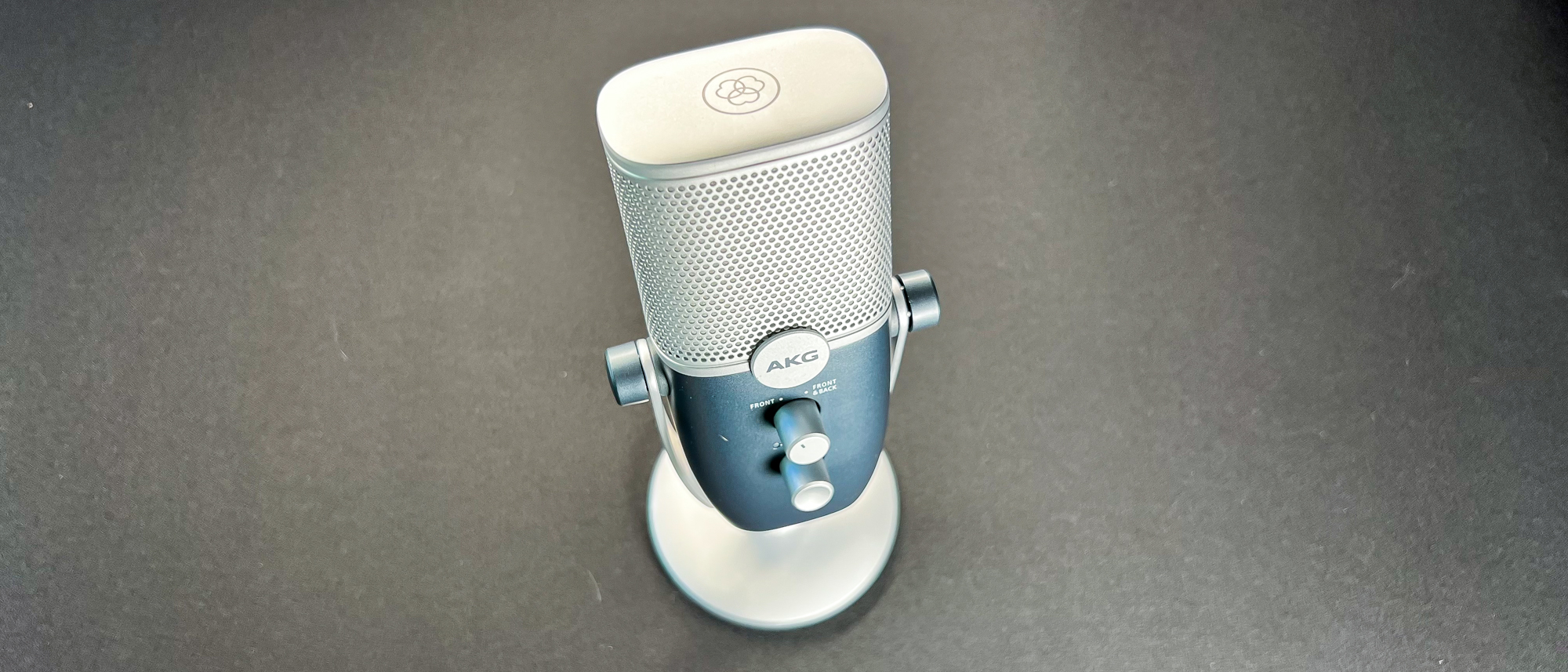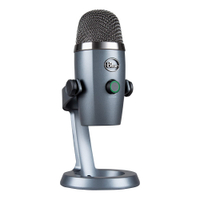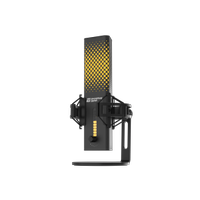TechRadar Verdict
With AKG Ara, you don’t have to spend a lot for excellent, if a little bottom-heavy, sound. Since it’s plug-and-play, it’s very easy to use as well. Its lack of gain control and sensitivity to physical vibrations keeps us from considering this the perfect budget USB mic. But, it’s still a damn good one.
Pros
- +
Full if bottom-heavy sound
- +
Plug-and-play
- +
Very affordable
Cons
- -
No gain control
- -
Very sensitive to bumps and vibrations
Why you can trust TechRadar
AKG Ara: One-minute review
The AKG Ara is a mighty fine USB mic. Considering the sea of USB mics you have to wade through to pick one, it’s a good thing that this mic is an easy recommendation. Yes, there are options from Razer, Elgato, HyperX, Blue, and many more, but AKG has been building solid mics since computers were the size of a medium-sized room. So, the company knows what it’s doing.
It’s not a perfect mic as we’ll see. But, anyone trying to get excellent audio for not a lot of money should consider it. It’s easy to use as it’s plug-and-play, sounds pretty good, especially for the price, and has enough functionality for most people.
If you need something with just a few more features, however, the slightly more expensive AKG Lyra covers much of the same ground as the Ara and includes the few things we wish the Ara had.
AKG Ara: Price and availability
- How much does it cost? $99 (£111, AU$219)
- Where is it available? Available now
- Where can you get it? Available in the US, the UK, and Australia
Sample rate: 24-bit 96kHz
Impedance: 16 Ohms
Features: Dual-pattern
The little brother of 2019’s AKG Lyra, the AKG Ara is a bit newer, having hit the shelves in the beginning of September 2021. It’s also cheaper, going for $99 (£111, AU$219) while the Lyra will cost you $149 (£149, AU$269). Of course, that price difference comes down to the fact that the Ara is a stripped-down version of the Lyra. It only has two polar patterns to the Lyra’s four and is more limited in its onboard controls.
Even as a more stripped-down mic, the AKG Ara offers a lot of value for the price. Sure, there are some cheaper options out there like JLab’s Go Talk or the no-frills Blue Snowball, both of which cost about half. But, the Ara is a much more solid mic with a sturdier build. Considering that AKG has been in the mic game for a long time, the Ara probably sounds a little better as well.
Most of the decent USB mics out there will cost the same or more. And, going the non-USB mic route will cost much more, as you’ll need both an interface and a mic. Cheap audio interfaces will cost around $100 / £100 and an adequate mic will start at that same price. That’s $200 / £200 at the cheapest.
All in all, the AKG Ara is worth more than the cost of entry.
- Value: 4.5 / 5
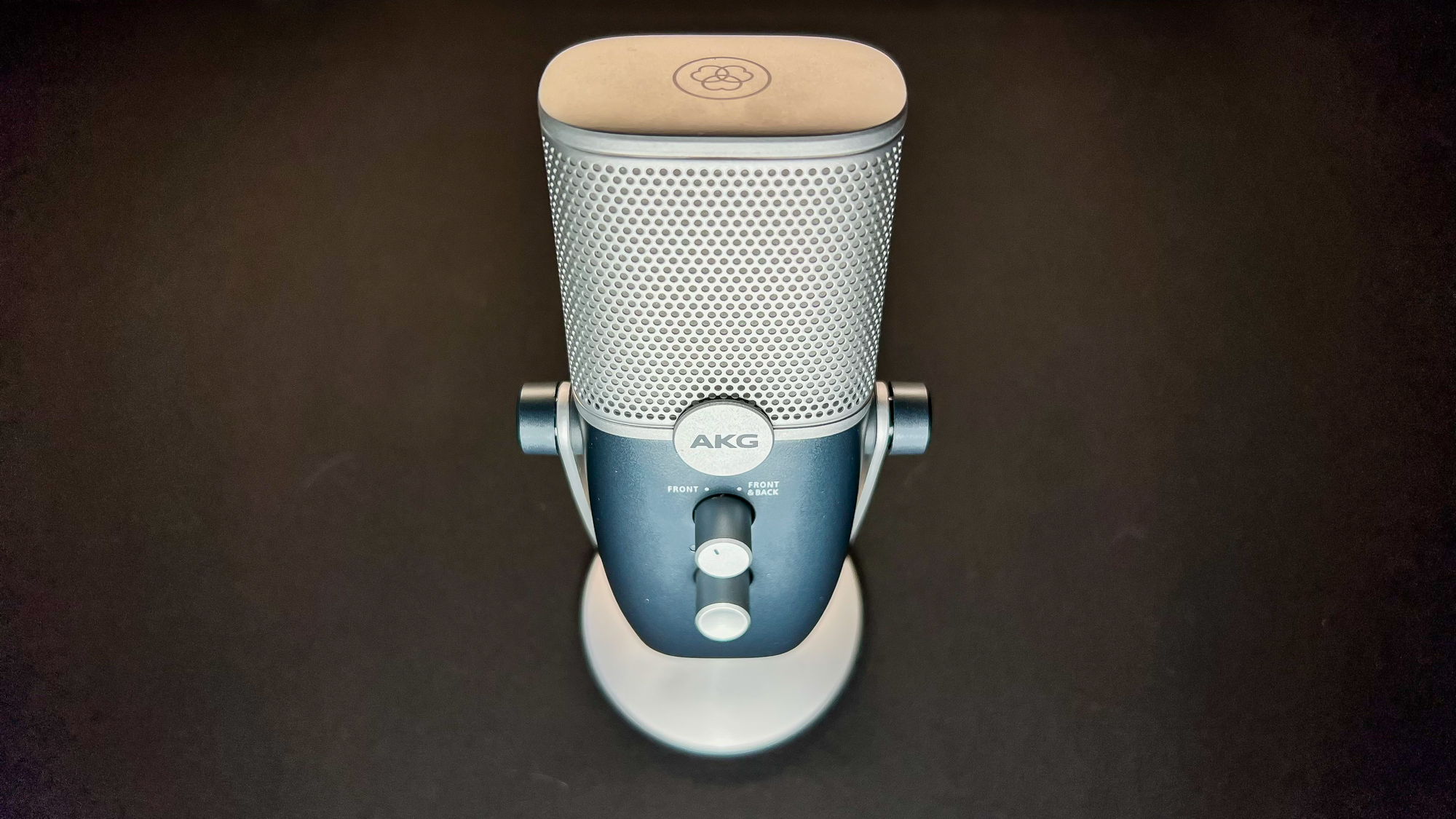
AKG Ara: Design
- No Gain Control
- Nice, articulating stand
AKG mics have been well-regarded long before USB mics were around. So, it’s no wonder that the AKG Ara is as well-built as it is. From the base and stand to the actual body and grill of the mic, the whole thing seems to be constructed of robust metal. It also comes in a classy, understated colorway of silver and dark blue.
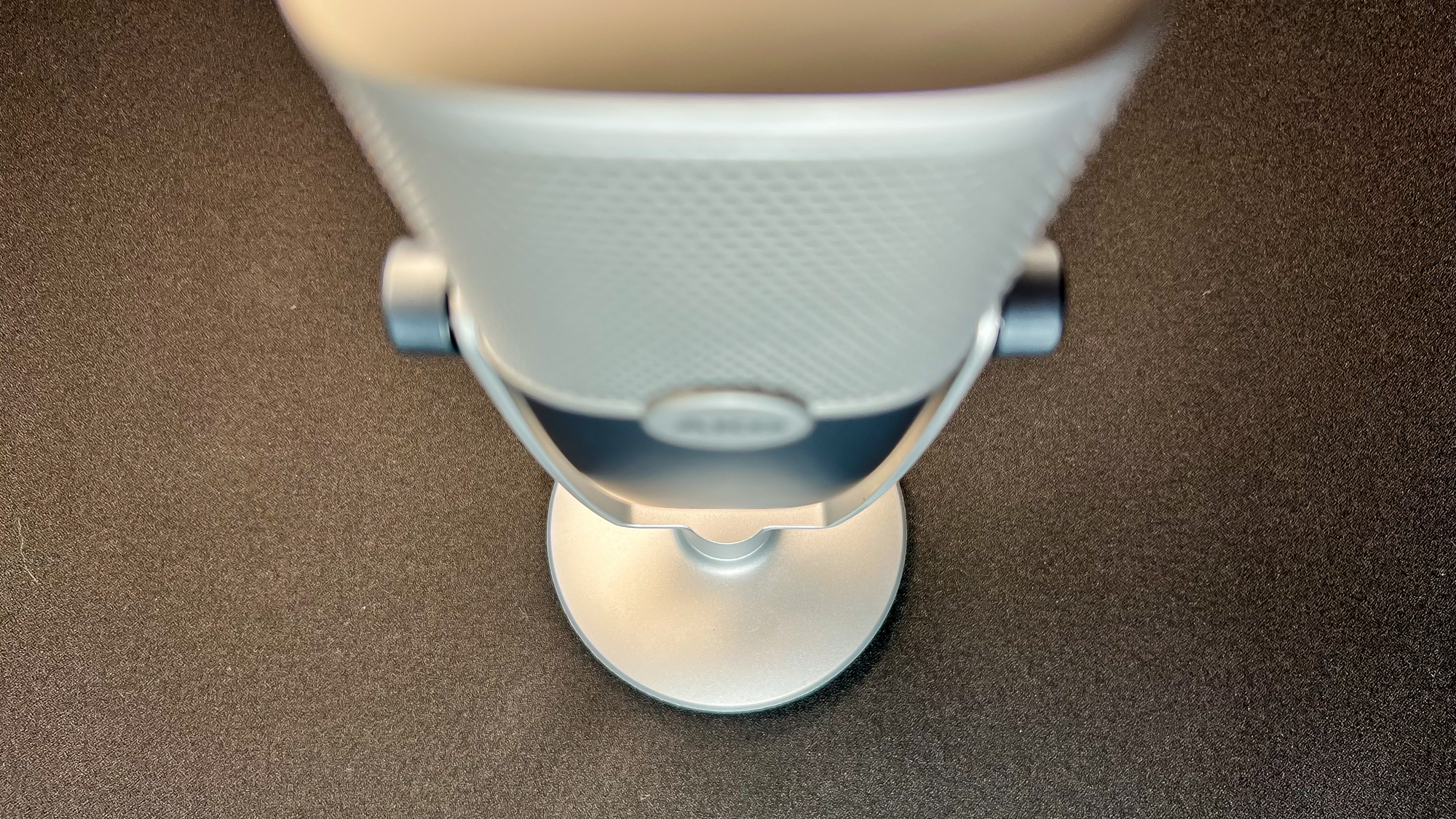
With a wide, tapered mic body as well as a round base and articulating stand, the Ara looks like it would fit on a newscaster’s desk in the 1960s. Of course, there are some clearly modern touches.
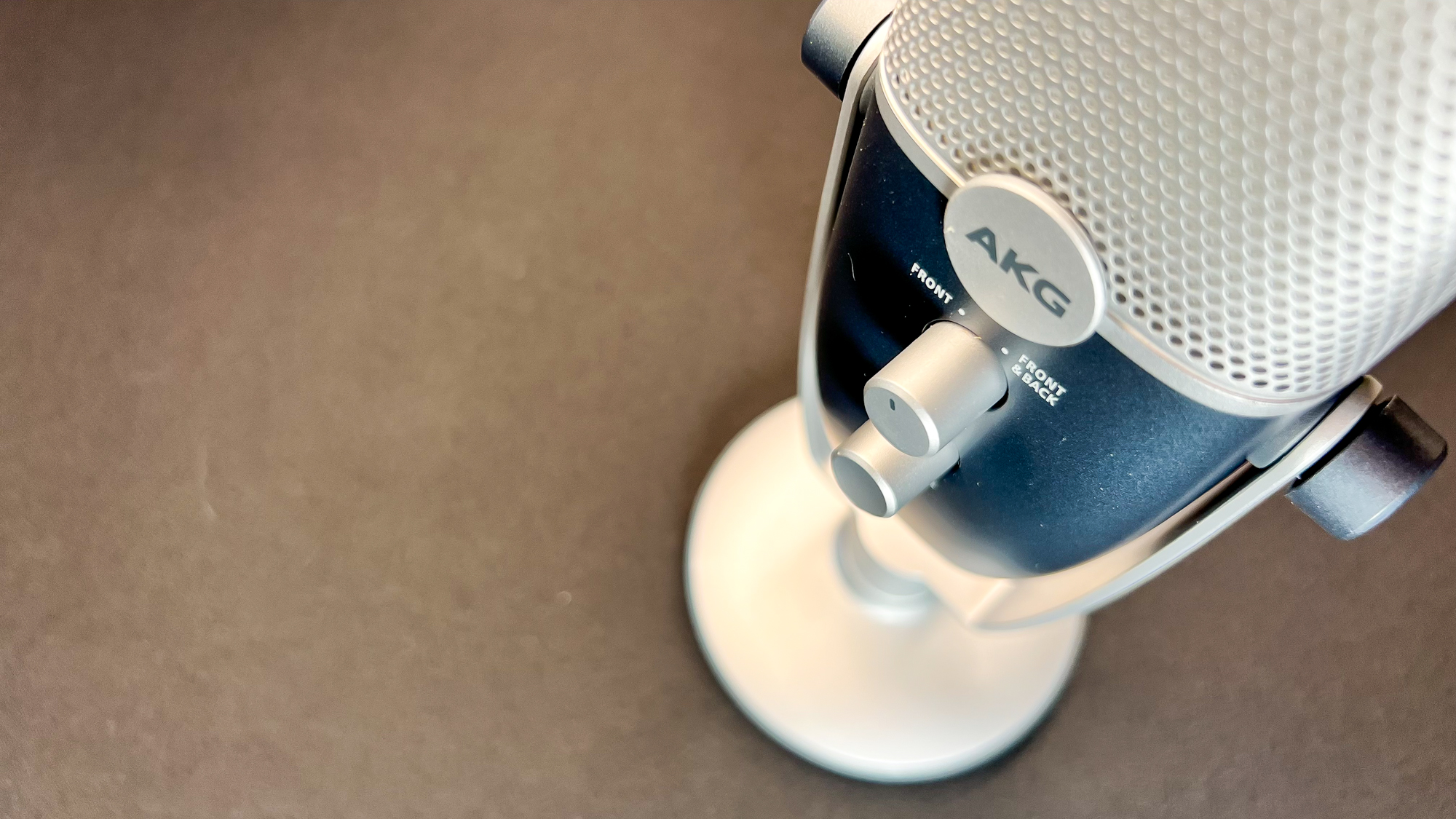
To start, two control dials protrude from the front of the mic. The top lets you select between its two mic patterns, front and front & back, while the bottom controls head volume. You can press the lower dial to mute the mic as well.
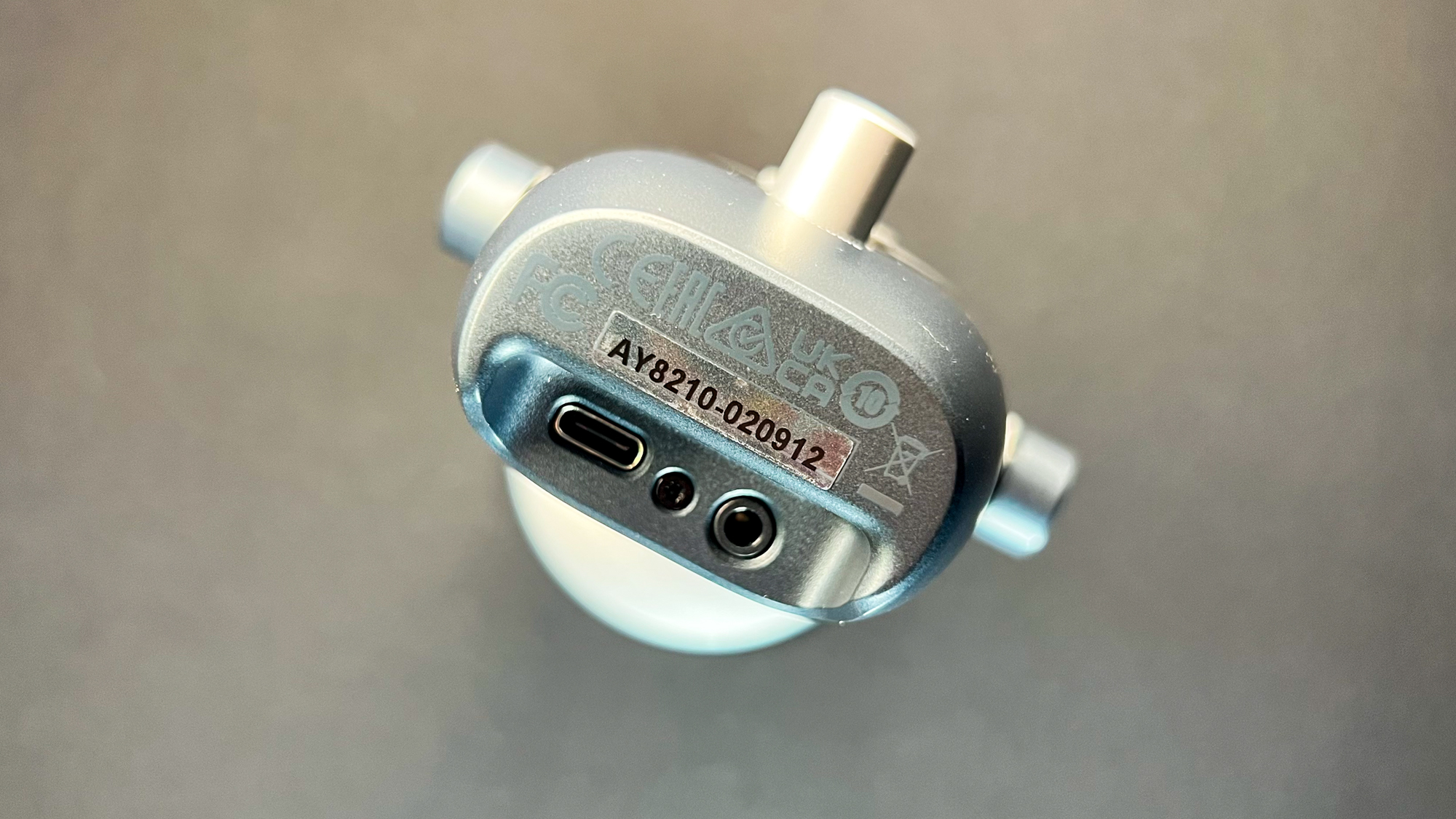
The one thing we do miss here is any kind of gain control. While plenty of traditional dynamic and condenser mics don’t have volume controls, many USB mics do. That’s because most non-USB mics are plugged into an interface with various controls including gain. With USB mics, on the other hand, the interface is built into the mic. That’s why you have ports like a headphone jack and USB-C port included on the back of the Ara.
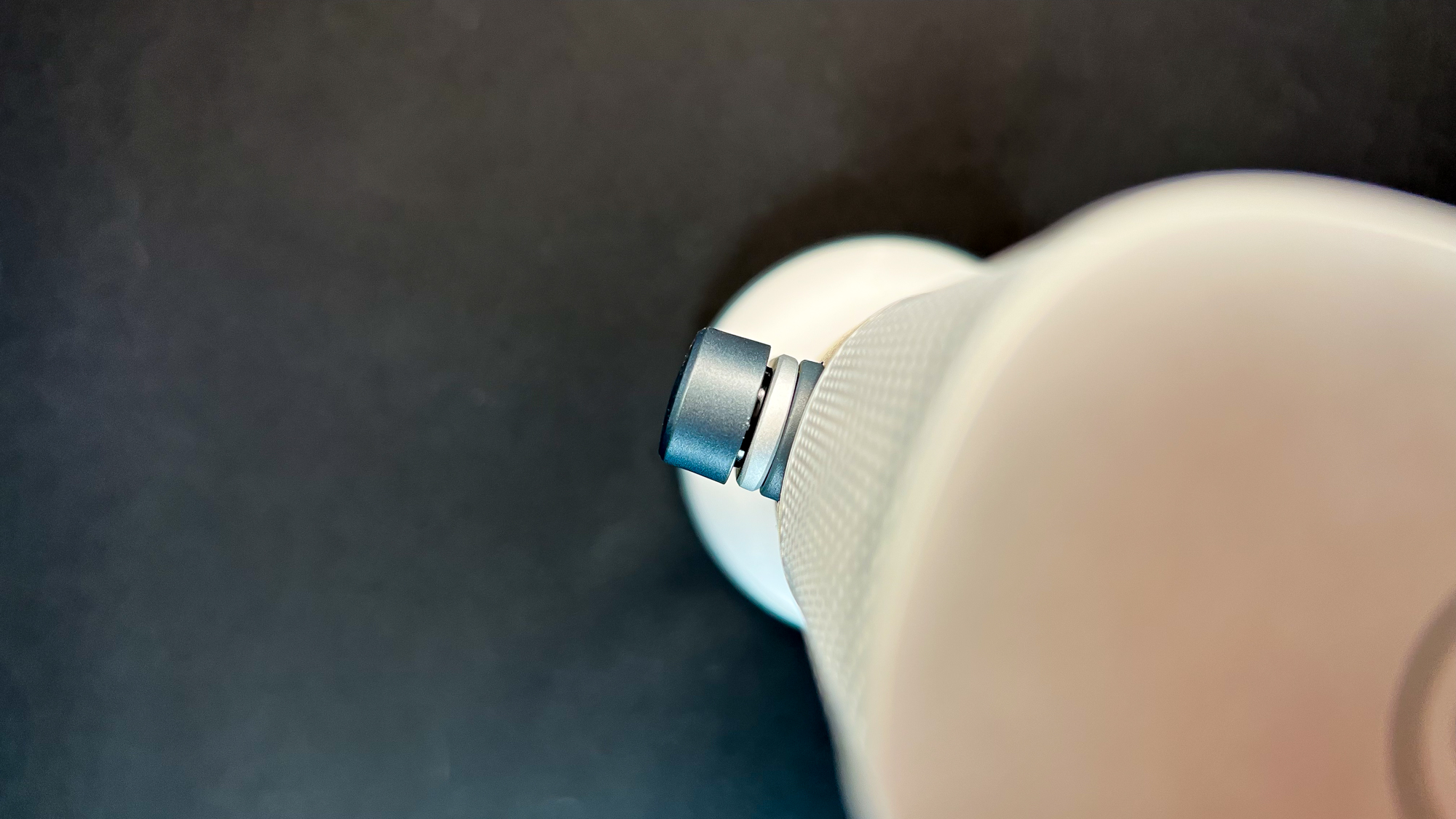
As far as the stand goes, while it doesn’t have any swivel, it’s still ergonomic enough for most people’s use. To start, it’s light enough to pick up and adjust, weighing 1.46 pounds. Even better, you can tilt it almost 360 degrees as it will go all the way back or forward until the head of the mic hits the stand. And, the joints where the stand meets the mic have screws in them that can be tightened to keep the mic angled in a particular direction. The base also screws off so you can mount it on a stand.
- Design: 4.5 / 5
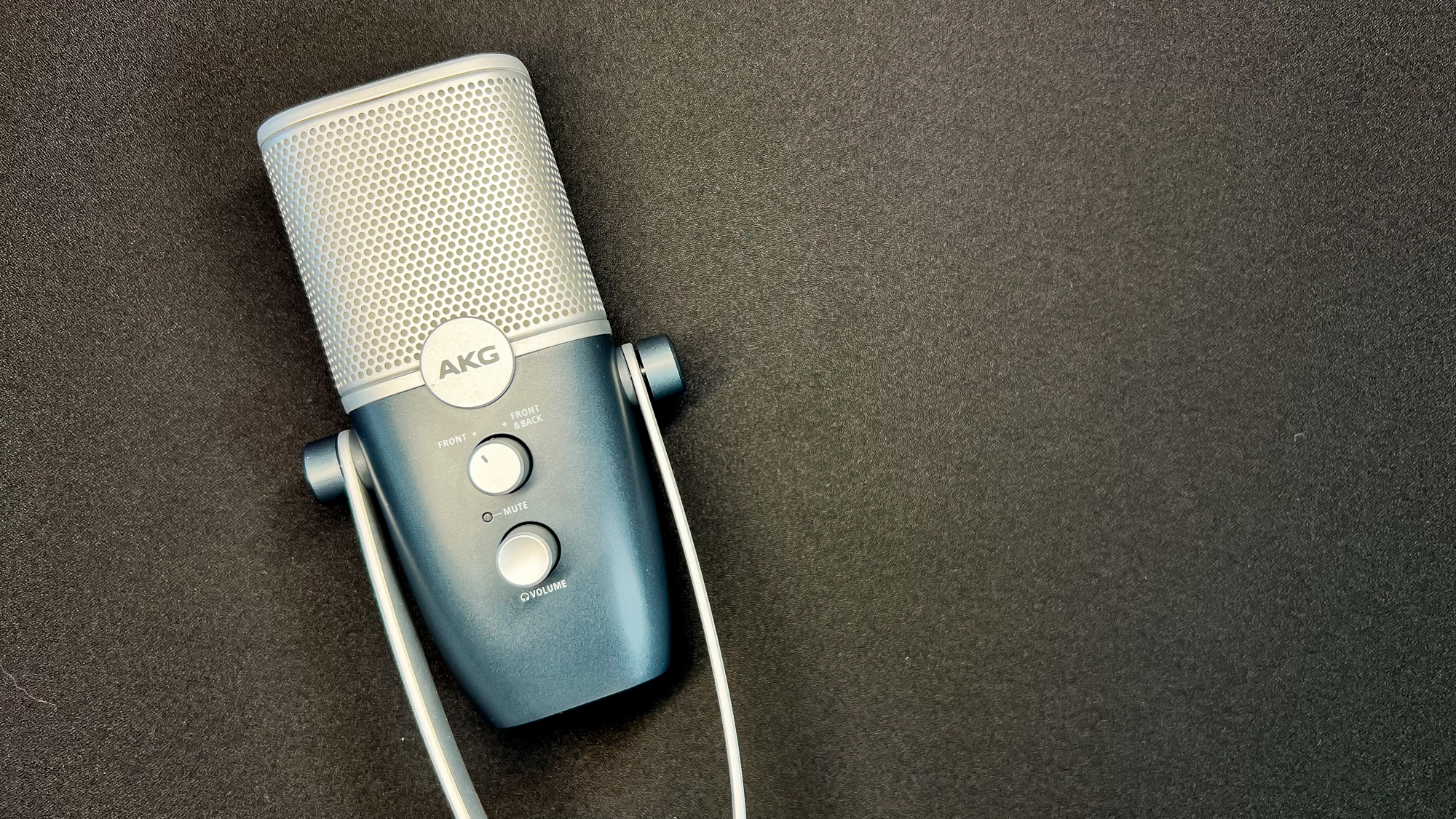
AKG Ara: Performance
- Plug-and-play
- Has a rich if somewhat bottom-heavy sound
- Susceptible to bumps
One of the main benefits of USB mics is the ease of use, which is certainly the case for the AKG Ara. There’s no real setup here since it’s plug-and-play. It even popped right up in Reason 11, a program we’ve had trouble getting other USB mics to work with due to driver issues – something that’s common among USB mics.
The mic itself has a nice, full sound with plenty of volume. In fact, it’s almost too loud. This is where that gain control would come in handy. It’s much easier to adjust gain on the mic than in your DAW. And, if your signal distorts on the way in, it doesn’t matter what adjustments you do to your recorded audio.
It also produces a somewhat bottom-heavy sound when on the front polar pattern. But, if you can adjust the low end via EQ, the mids are nice and rich, and the highs are decently clear. What you get overall is a rich but balanced sound. It even sounds good on guitars this way. That said, that low end might help those doing voice work, whether it’s for a YouTube video, a podcast, or streaming.
When using the front and back polar pattern, the mic’s low end becomes much more restrained, a strange change considering we’ve tested its older brother, the AKG Lyra, and never heard much difference sound-wise between its four polar patterns. But, it does make it a more usable sound whether you’re streaming or recording.
Regarding the polar patterns, the Ara has just two, front (or cardioid) and front and back which is a figure eight pattern. While we would have preferred an omnidirectional pattern for the second one, the front and back pattern does well for picking up both sides of the mic equally. That makes it ideal for conversations between two people as you might do if you had a podcast.
The one place that we wish was a bit better is in how sensitive this mic is to vibrations and bumps. Though every mic will pick up taps to the mic body, most use something to minimize vibrations through its stand such as shock mounts. The stand for the Ara works well for almost everything, but its solid construction means that vibrations through the surface it’s on might make it into your audio. The Ara still pick up the vibrations pretty clearly when we knock on the desk it’s on, for instance.
- Performance: 4.5 / 5
Should I buy the AKG Ara?
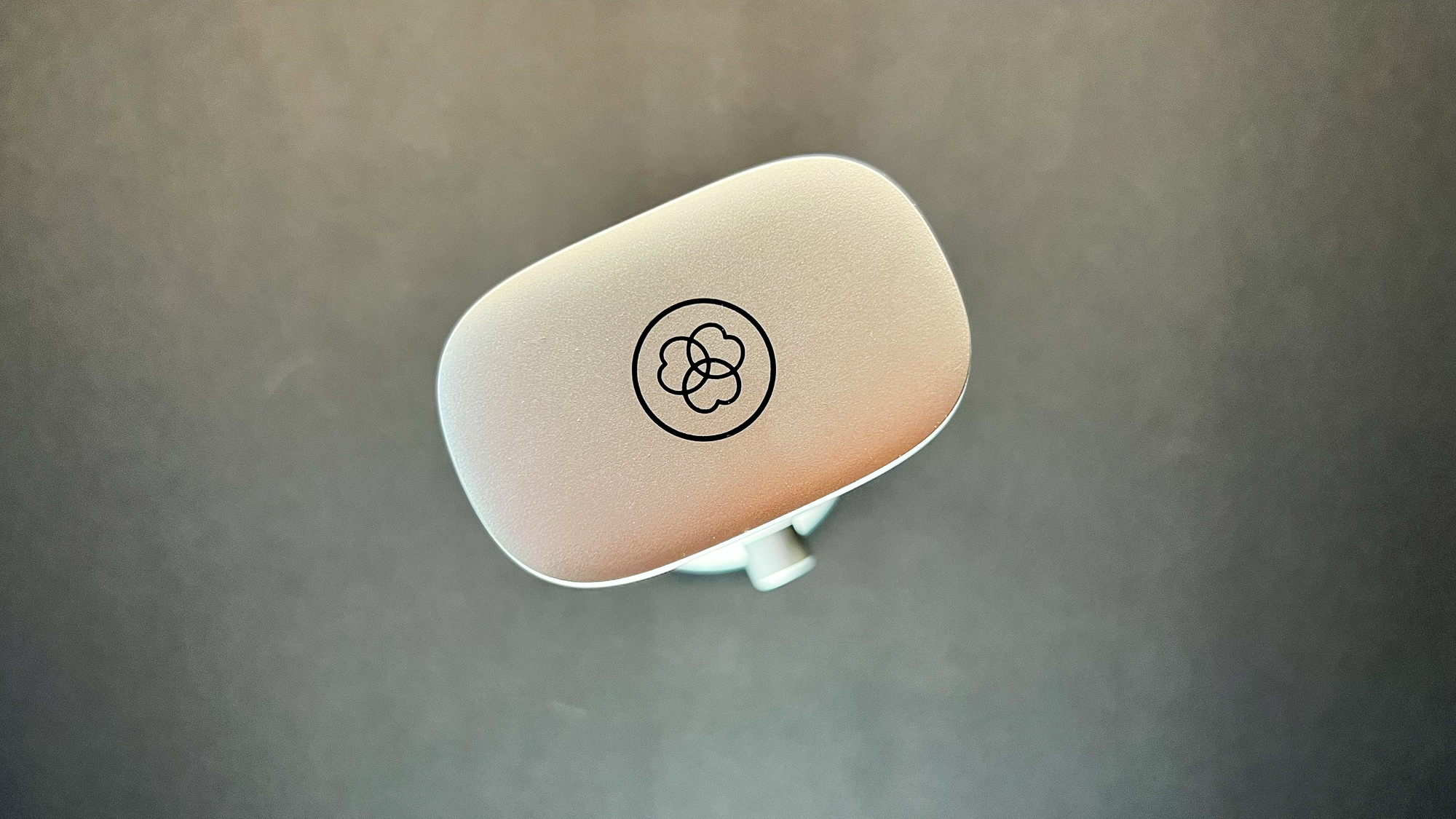
Buy it if...
You’re on a budget
At around $100 / £100, the AKG Ara is a steal. It’s a solid mic with a nice, full sound that works the way it should.
You need something that’s easy to use
The AKG Ara is plug-and-play. You don’t have to mess with getting your interface to work properly or whether it supplies power to certain mics. All you have to do is plug into an open USB port.
You want a full-sounding mic
All mics sound a little different. But, if you need a full sound, maybe you have a lower voice, for instance, the Ara is a wonderful option. Plus, it cleans up nicely with some EQ.
Don't buy it if...
You need a lot of features
While it sounds very good, there’s no gain control and just two polar patterns on hand. So, if you need a swiss army knife USB-mic, you might be better off with something like the Lyra.
You absolutely need onboard gain control
Being able to physically adjust volume on-the-fly is crucial to just about every setup so not having it here could be a deal-breaker for some.
Also consider
Blue Yeti
The Blue Yeti is one of the most popular USB mic on the planet for a reason. It’s plug-and-play, relatively affordable even if it’s a little pricier than most mics of the USB variety and comes with four polar patterns for a versatile option. And, it also sounds good.
Read our full Blue Yeti review
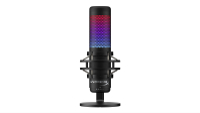
HyperX QuadCast S
We've not had the pleasure of reviewing this one yet, but from everything we've seen, it offers pretty much the same as the XSTRM - though with a slightly higher price ticket to account for the four polar pattern options and customizable RGB.
XSTRM USB Mic
The XSTRM USB Mic is not only a stylish mic but one packed with features including input gain control, Hi fidelity recording, and AI noise reduction, even if that last one is a bit underwhelming. It also comes with a pop stand, something that usually costs extra.
Read our full XSTRM USB mic
AKG Ara: Report card
| Value | There might be cheaper USB mics out there but we doubt they’re as good as this. | 4.5 / 5 |
| Design | Other than that missing gain control, this is a well-put-together mic with a sturdy, articulating stand. | 4.5 / 5 |
| Performance | The mic has a nice, full sound that lends itself well to EQ. We just wish the mic didn’t pick up physical vibrations as easily as it does. | 4.5 / 5 |
| Total | While that missing gain control is a problem, there’s not much else to fault here, especially considering how great it sounds for the price. | 4.5 / 5 |
- First reviewed November 2022
How we test
We pride ourselves on our independence and our rigorous review-testing process, offering up long-term attention to the products we review and making sure our reviews are updated and maintained - regardless of when a device was released, if you can still buy it, it's on our radar.

James Holland loves checking out gadgets of all sorts, whether it's audio equipment, laptops, or vacuums (especially of the robot variety), and does so for a number of Future Publications including TechRadar, Top Ten Reviews, Homes & Gardens, and T3. He's built up an expertise for in-depth reviewing over the last four years. When he's not putting in the work on the latest tech, he loves to travel, play music, and eat questionable food.
